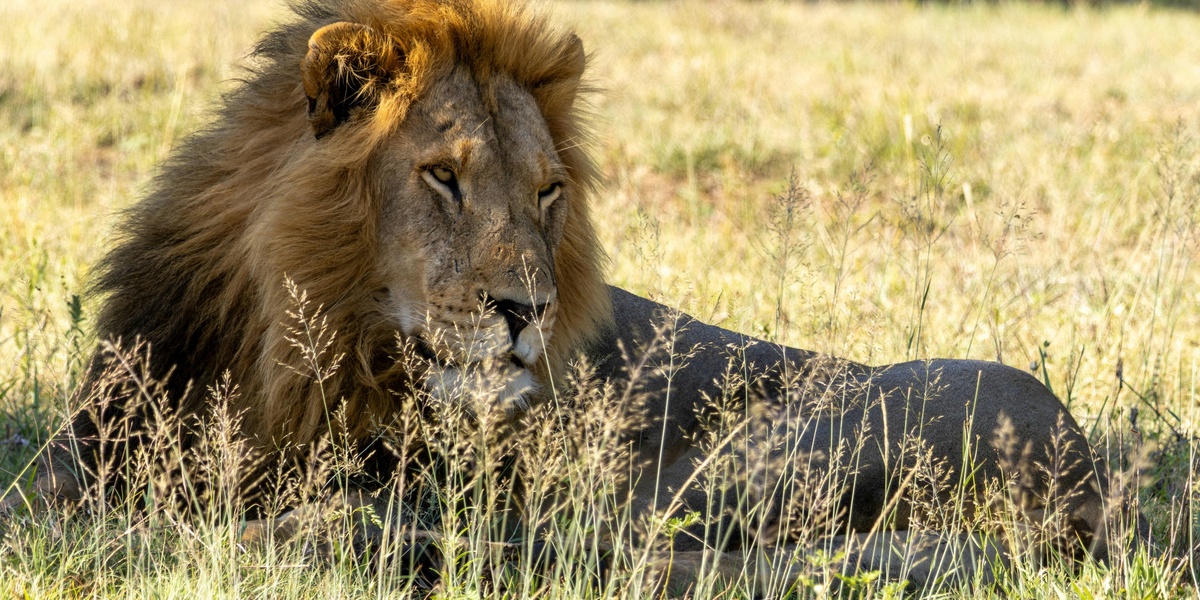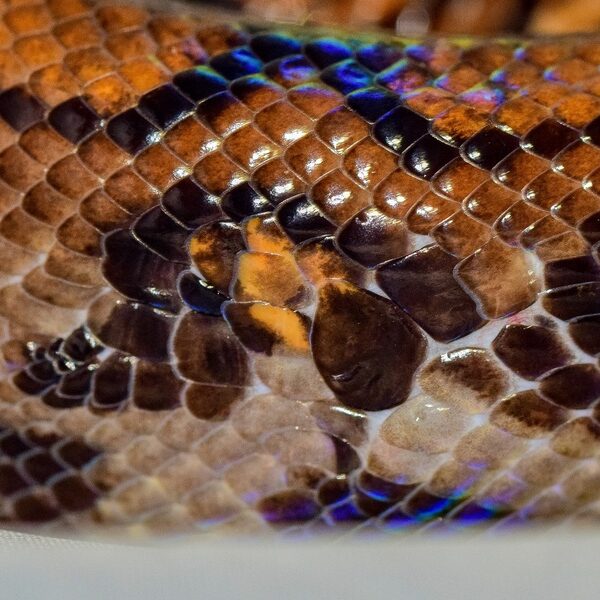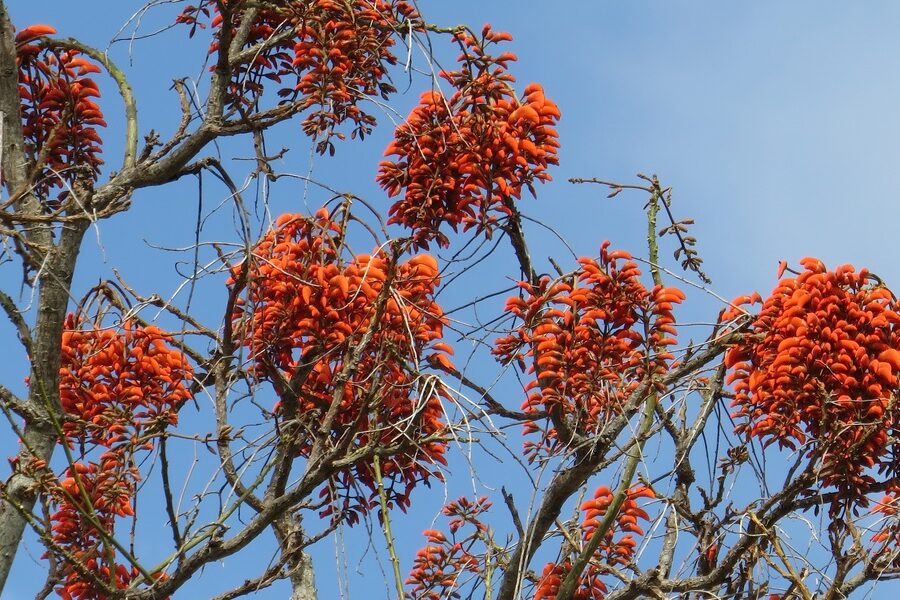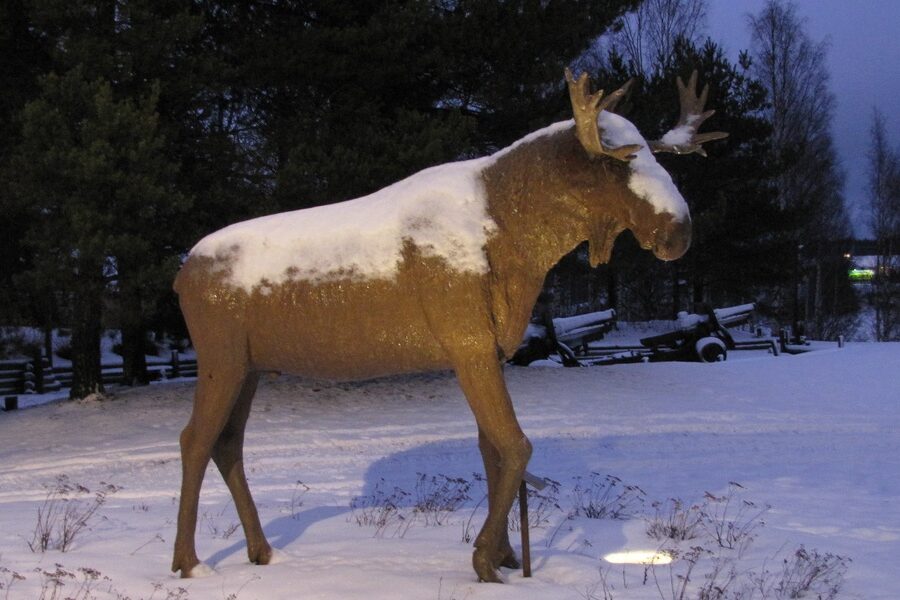The wide grasses, scattered trees and seasonal rains of the savanna create a landscape where survival depends on speed, stealth and seasonal timing. This is a place of long migrations, nocturnal foragers and species adapted to both drought and sudden abundance.
There are 76 Savanna Animals, ranging from Aardvark to Yellow-billed Stork. For each species the list shows Scientific name,Size (length cm, weight kg),Range to make comparisons easy — you’ll find below.
How is the list organized and what do the columns mean?
The entries are grouped as a straightforward list, each line giving the Scientific name,Size (length cm, weight kg),Range so you can see taxonomy, typical body measurements and geographic distribution at a glance.
Are all these animals found across every savanna region?
No — some species are widespread while others are endemic to particular countries or regions; check the Range column for where each animal lives and note that similar ecosystems on different continents host different sets of species.
Savanna Animals
| Name | Scientific name | Size (length cm, weight kg) | Range |
|---|---|---|---|
| Lion | Panthera leo | 190, 190 | Africa south of the Sahara and a remnant population in India. |
| African Bush Elephant | Loxodonta africana | 650, 6,000 | Sub-Saharan Africa in savannas, forests, and woodlands. |
| Giraffe | Giraffa camelopardalis | 550, 1,200 | Fragmented populations across sub-Saharan Africa’s savannas and woodlands. |
| Plains Zebra | Equus quagga | 230, 290 | Eastern and Southern Africa’s treeless grasslands and savanna woodlands. |
| Cheetah | Acinonyx jubatus | 130, 45 | Southern and Eastern Africa, with a small population in Iran. |
| Leopard | Panthera pardus | 140, 60 | Widespread across Africa and Asia, highly adaptable to various habitats including savanna. |
| Spotted Hyena | Crocuta crocuta | 145, 65 | Widespread across sub-Saharan Africa, excluding dense forests and deserts. |
| African Wild Dog | Lycaon pictus | 90, 25 | Fragmented populations in southern and eastern African savannas and woodlands. |
| Black Rhinoceros | Diceros bicornis | 350, 1,100 | Southern and Eastern Africa in savanna, shrubland, and grasslands. |
| White Rhinoceros | Ceratotherium simum | 390, 2,300 | Southern Africa, with a smaller population in Eastern Africa. |
| African Buffalo | Syncerus caffer | 280, 650 | Sub-Saharan Africa in dense forests and open savannas near water. |
| Hippopotamus | Hippopotamus amphibius | 350, 1,500 | Sub-Saharan Africa in rivers and lakes within savanna and forest regions. |
| Wildebeest | Connochaetes taurinus | 210, 200 | Savannas and open woodlands of Eastern and Southern Africa. |
| Thomson’s Gazelle | Eudorcas thomsonii | 95, 22 | Savannas of Kenya and Tanzania. |
| Impala | Aepyceros melampus | 130, 55 | Savannas and light woodlands of eastern and southern Africa. |
| Warthog | Phacochoerus africanus | 125, 85 | Grasslands, savannas, and woodlands in sub-Saharan Africa. |
| Meerkat | Suricata suricatta | 30, 0.75 | Kalahari Desert and other arid savanna regions of Southern Africa. |
| Ostrich | Struthio camelus | 230, 120 | Savannas and semi-arid regions of Africa. |
| Secretarybird | Sagittarius serpentarius | 135, 4 | Open grasslands and savanna across sub-Saharan Africa. |
| Kori Bustard | Ardeotis kori | 135, 12 | Grasslands and lightly wooded savannas of eastern and southern Africa. |
| Vervet Monkey | Chlorocebus pygerythrus | 50, 4.5 | Savannas, woodlands, and riverine forests of Eastern Africa. |
| Olive Baboon | Papio anubis | 70, 25 | Savannas, steppes, and forests across a wide band of equatorial Africa. |
| Aardvark | Orycteropus afer | 110, 65 | Savannas, grasslands, and woodlands throughout sub-Saharan Africa. |
| Serval | Leptailurus serval | 75, 13 | Wetlands and savannas across sub-Saharan Africa. |
| Caracal | Caracal caracal | 75, 14 | Savannas, scrublands, and semi-deserts of Africa, the Middle East, and India. |
| Black-backed Jackal | Lupulella mesomelas | 75, 9 | Savannas and woodlands of Eastern and Southern Africa. |
| Bat-eared Fox | Otocyon megalotis | 55, 4 | Short-grass plains and savannas of eastern and southern Africa. |
| Honey Badger | Mellivora capensis | 70, 12 | Widespread in Africa and Asia in savannas, forests, and grasslands. |
| Ground Pangolin | Smutsia temminckii | 55, 12 | Savannas and woodlands in eastern and southern Africa. |
| Greater Kudu | Tragelaphus strepsiceros | 220, 250 | Savanna woodlands and bushlands throughout eastern and southern Africa. |
| Common Eland | Taurotragus oryx | 280, 600 | Savannas and plains across East and Southern Africa. |
| Waterbuck | Kobus ellipsiprymnus | 220, 230 | Savannas and woodlands near rivers and lakes in sub-Saharan Africa. |
| Nile Crocodile | Crocodylus niloticus | 450, 400 | Rivers, lakes, and marshes in savanna and other habitats across sub-Saharan Africa. |
| African Rock Python | Python sebae | 400, 70 | Savannas and grasslands near water sources in sub-Saharan Africa. |
| Leopard Tortoise | Stigmochelys pardalis | 50, 20 | Savannas and grasslands of eastern and southern Africa. |
| Savannah Monitor | Varanus exanthematicus | 100, 5 | Sub-Saharan savannas, from Senegal to Sudan and south to Angola. |
| Red Kangaroo | Osphranter rufus | 140, 65 | Arid and semi-arid grasslands and savannas of central Australia. |
| Eastern Grey Kangaroo | Macropus giganteus | 110, 45 | Eastern Australia’s open woodlands, grasslands, and coastal areas. |
| Emu | Dromaius novaehollandiae | 170, 40 | Savannas, woodlands, and mallee across most of Australia. |
| Dingo | Canis dingo | 100, 15 | Australian savannas, grasslands, and forests. |
| Koala | Phascolarctos cinereus | 75, 9 | Eucalypt woodlands and savanna forests of eastern Australia. |
| Agile Wallaby | Notamacropus agilis | 70, 20 | Tropical savannas and grasslands of northern Australia and New Guinea. |
| Giant Anteater | Myrmecophaga tridactyla | 200, 35 | Grasslands and savannas like the Cerrado in Central and South America. |
| Maned Wolf | Chrysocyon brachyurus | 100, 23 | South American savannas, especially the Cerrado of Brazil. |
| Jaguar | Panthera onca | 140, 90 | Tropical forests, wetlands, and savannas from Mexico to Argentina. |
| Capybara | Hydrochoerus hydrochaeris | 115, 50 | Wet savannas, wetlands, and forests near water bodies in South America. |
| Greater Rhea | Rhea americana | 135, 25 | Open grasslands and savannas (Pampas, Cerrado) of South America. |
| Indian Rhinoceros | Rhinoceros unicornis | 350, 2,200 | Alluvial grasslands and savanna of the Terai region in India and Nepal. |
| Nilgai | Boselaphus tragocamelus | 200, 200 | Grasslands and savanna woodlands on the Indian subcontinent. |
| Blackbuck | Antilope cervicapra | 120, 38 | Grasslands and lightly wooded savannas of India. |
| Marabou Stork | Leptoptilos crumenifer | 130, 6 | Wet and arid savannas across sub-Saharan Africa. |
| Lilac-breasted Roller | Coracias caudatus | 37, 0.1 | Open woodlands and savannas throughout sub-Saharan Africa. |
| Helmeted Guineafowl | Numida meleagris | 58, 1.3 | Savannas and bushlands across sub-Saharan Africa. |
| Southern Ground Hornbill | Bucorvus leadbeateri | 110, 4 | Savannas and woodlands of southern and eastern Africa. |
| Laughing Kookaburra | Dacelo novaeguineae | 43, 0.35 | Eucalypt forests and savanna woodlands of eastern Australia. |
| Toco Toucan | Ramphastos toco | 60, 0.6 | South American savannas (Cerrado) and tropical forests. |
| Hyacinth Macaw | Anodorhynchus hyacinthinus | 100, 1.5 | Savanna woodlands and forests of central South America. |
| Giant Otter | Pteronura brasiliensis | 170, 30 | Rivers and lakes in tropical forests and wet savannas like the Pantanal. |
| South American Tapir | Tapirus terrestris | 200, 225 | Forests and wet savannas near water sources in South America. |
| Gerenuk | Litocranius walleri | 150, 40 | Dry bush and savanna of the Horn of Africa. |
| Sable Antelope | Hippotragus niger | 235, 230 | Savanna woodlands in southeastern Africa. |
| Roan Antelope | Hippotragus equinus | 240, 260 | Woodland and grassland savannas across a wide band of Africa. |
| Topi | Damaliscus lunatus jimela | 180, 130 | Savannas, floodplains, and grasslands of sub-Saharan Africa. |
| Hartebeest | Alcelaphus buselaphus | 200, 150 | Grassland and savanna habitats throughout Africa. |
| Springbok | Antidorcas marsupialis | 135, 38 | Dry grasslands and savannas of southwestern Africa. |
| Gemsbok | Oryx gazella | 190, 200 | Arid savannas and deserts of Southern Africa, like the Kalahari. |
| Grey Crowned Crane | Balearica regulorum | 100, 3.5 | Wetlands and grassy savannas in eastern and southern Africa. |
| Lappet-faced Vulture | Torgos tracheliotos | 105, 7 | Dry savannas and arid plains across Africa and the Middle East. |
| White-backed Vulture | Gyps africanus | 90, 5.5 | Savannas across sub-Saharan Africa. |
| Yellow-billed Stork | Mycteria ibis | 97, 2 | Wetlands within savannas and grasslands across sub-Saharan Africa. |
| Grant’s Gazelle | Nanger granti | 155, 60 | Open grass plains and shrublands of Eastern Africa. |
| Red-legged Seriema | Cariama cristata | 80, 1.5 | Grasslands and savanna woodlands like the Cerrado in South America. |
| Pampas Deer | Ozotoceros bezoarticus | 120, 35 | Lowland grasslands and savannas of South America. |
| Hoary Fox | Lycalopex vetulus | 60, 3.5 | The Cerrado savanna of central Brazil. |
| Giant Armadillo | Priodontes maximus | 85, 40 | Savannas and forests of South America. |
| Gould’s Goanna | Varanus gouldii | 140, 4 | Woodlands and sandy savannas across Australia. |
Images and Descriptions
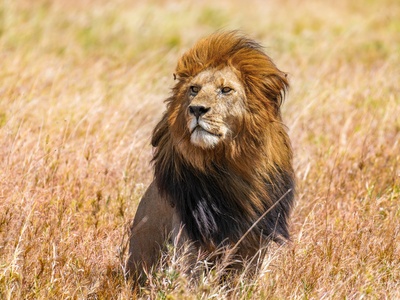
Lion
The savanna’s apex predator and the most social of all big cats, living in groups called prides. Lions are famous for their powerful roar that can be heard from kilometers away. Their population is listed as Vulnerable.

African Bush Elephant
The largest land animal on Earth, known for its intelligence, complex social structures, and large tusks. Elephants are keystone species, shaping the savanna environment by uprooting trees and creating waterholes.
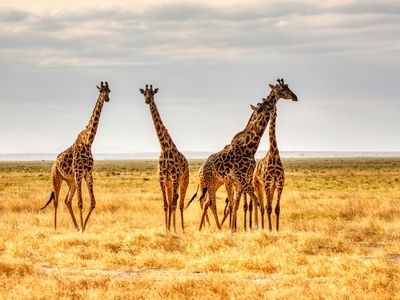
Giraffe
The world’s tallest mammal, using its long neck to browse on high branches that other herbivores cannot reach. Their unique coat patterns act as camouflage and help with temperature regulation.

Plains Zebra
Instantly recognizable by their black-and-white striped coats, which confuse predators and deter biting flies. They are social animals living in large herds, often migrating great distances for fresh grazing.
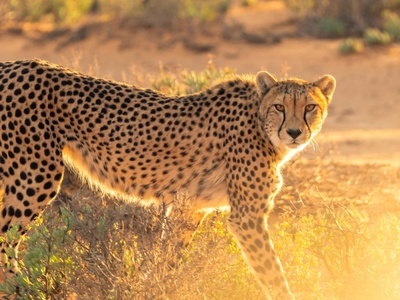
Cheetah
The fastest land animal on Earth, capable of reaching speeds up to 120 km/h in short bursts. Unlike other big cats, cheetahs are diurnal hunters that rely on speed rather than stealth.
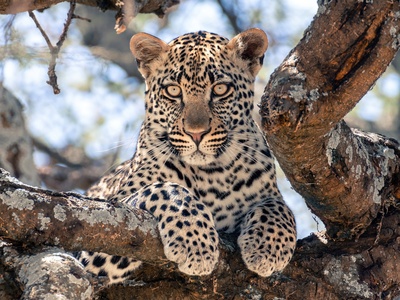
Leopard
A solitary and elusive predator known for its incredible strength, often hauling heavy prey up trees to keep it safe from scavengers like lions and hyenas. Their rosette patterns provide excellent camouflage.

Spotted Hyena
A highly intelligent and social carnivore with one of the most powerful bites in the animal kingdom. Often miscast as mere scavengers, they are formidable hunters, with clans capable of taking down large prey.

African Wild Dog
A highly social and endangered canine known for its large, rounded ears and unique mottled coat. They are cooperative hunters with incredible stamina, pursuing prey over long distances until exhaustion.

Black Rhinoceros
A critically endangered browser that uses its prehensile upper lip to grasp leaves and twigs. They are solitary and have a reputation for being more aggressive than their white rhino cousins.

White Rhinoceros
A large grazer with a square lip adapted for eating grass. Despite their name, they are gray. They are more social than black rhinos and are considered Near Threatened due to poaching.
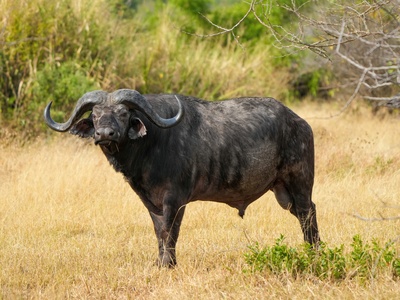
African Buffalo
A large, powerful bovine with massive, fused horns that form a “boss.” Known for their unpredictable and defensive nature, they are one of the most dangerous animals in Africa.

Hippopotamus
A semi-aquatic mammal that spends its days in water to stay cool and emerges at night to graze on savanna grasses. Despite their placid appearance, hippos are highly aggressive and territorial.
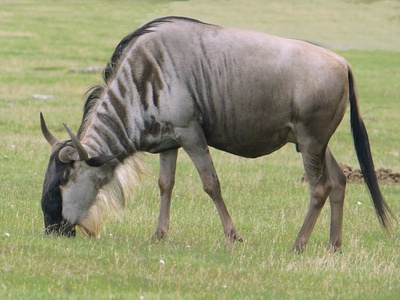
Wildebeest
Famous for undertaking one of the world’s largest terrestrial migrations, where over a million individuals travel in a circular route across the Serengeti-Mara ecosystem in search of green pasture.
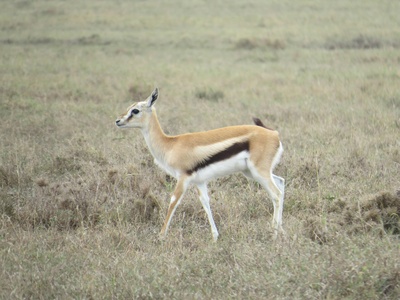
Thomson’s Gazelle
A small, fast gazelle known for its graceful appearance and a distinctive black stripe on its flank. They are a common prey species for predators like cheetahs and wild dogs.
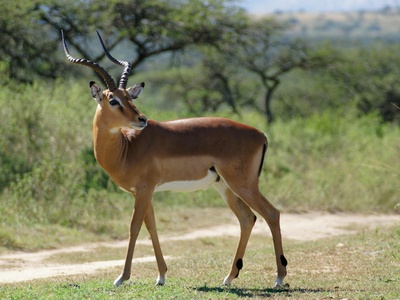
Impala
A medium-sized, graceful antelope renowned for its incredible leaping ability, used to evade predators. Males possess long, lyre-shaped horns. They are both browsers and grazers.

Warthog
A wild pig easily identified by the prominent “warts” on its face, which are protective bumps of cartilage. They live in burrows and are known for kneeling on their front knees to graze.
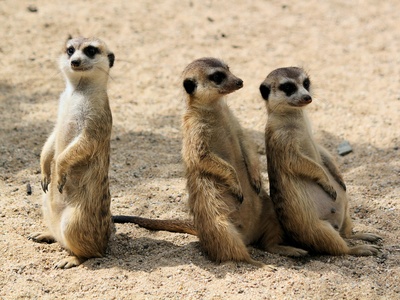
Meerkat
A small, highly social mongoose that lives in large underground networks. Known for their cooperative behavior, with sentinels standing guard on their hind legs to watch for predators while others forage.

Ostrich
The world’s largest and heaviest bird, incapable of flight but a formidable runner. Males are known for their striking black and white plumage and perform elaborate courtship dances.
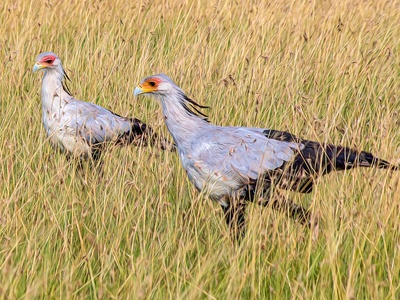
Secretarybird
A large, terrestrial bird of prey famous for its snake-hunting skills, killing prey by stomping on it with its powerful, long legs. Its name comes from its crest of long feathers resembling quill pens.
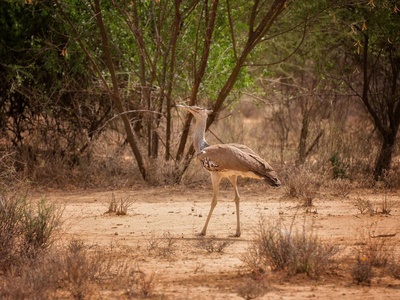
Kori Bustard
One of the world’s heaviest flying birds. Males perform impressive courtship displays, inflating their throat sacs to produce a deep booming sound. They are omnivorous, feeding on insects, seeds, and small animals.

Vervet Monkey
A highly adaptable monkey with a black face and silvery-grey body. They are known for having a complex system of alarm calls that distinguish between different types of predators, such as leopards, eagles, and snakes.
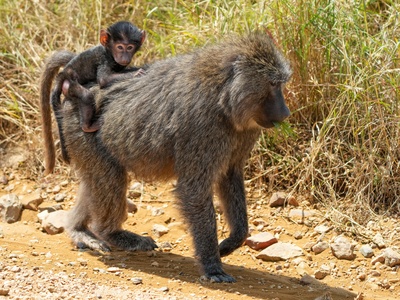
Olive Baboon
A large, adaptable primate living in complex, multi-male, multi-female troops. They are omnivorous and highly intelligent, often seen foraging on the ground for roots, insects, and small animals.
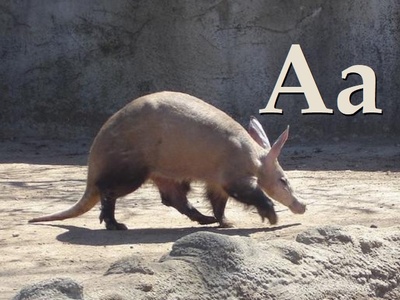
Aardvark
A nocturnal, burrowing mammal with powerful claws and a pig-like snout. It specializes in feeding on ants and termites, which it locates with its keen sense of smell and digs out of their mounds.
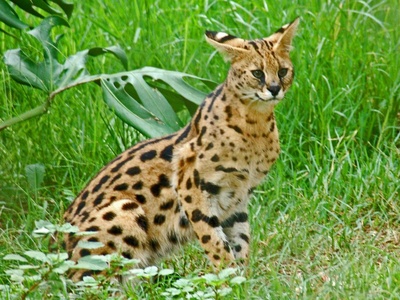
Serval
A slender, medium-sized wild cat with long legs, a short tail, and large ears. It is an expert at hunting small prey like rodents and birds, using its incredible hearing to locate them before pouncing.

Caracal
A powerfully built wild cat known for its distinctive long, black-tufted ears. It is an agile hunter, capable of leaping high into the air to catch birds in mid-flight.

Black-backed Jackal
A small, clever canine with a distinctive black “saddle” on its back. They are highly adaptable omnivores and often follow large predators to scavenge from their kills, but also hunt small animals themselves.

Bat-eared Fox
A small fox named for its enormous ears, which it uses to locate insects like termites and beetles underground. Unusually for canids, its diet consists almost entirely of insects.
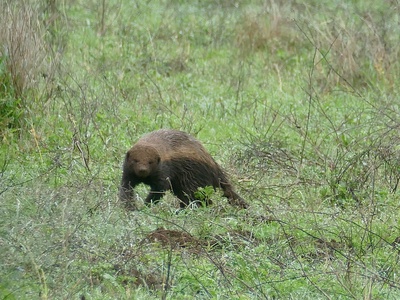
Honey Badger
Famed for its fearlessness, thick protective skin, and incredible tenacity. It is an opportunistic carnivore that will confront animals as large as lions and is a skilled hunter of snakes.

Ground Pangolin
A unique mammal covered in protective keratin scales. When threatened, it rolls into a tight ball. It is a nocturnal specialist feeder on ants and termites, and is critically endangered due to trafficking.
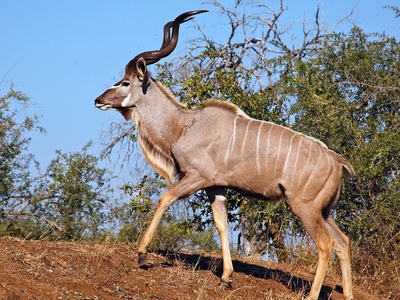
Greater Kudu
A large, elegant antelope with long, spiral horns found in males. Its coat has thin vertical white stripes that provide excellent camouflage in the dappled light of the bush.

Common Eland
The world’s largest antelope, with both sexes having twisted horns. Despite their great size, they are surprisingly agile and can jump impressive heights from a standing start.

Waterbuck
A large antelope with a shaggy, waterproof coat and a distinctive white ring around its neck or on its rump. They often retreat into water to escape predators.
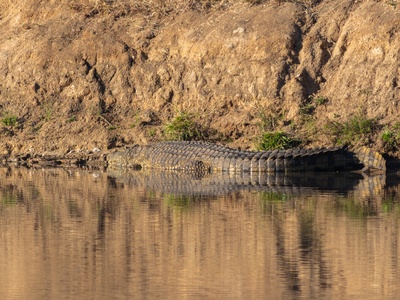
Nile Crocodile
Africa’s largest crocodilian, a powerful apex predator that ambushes prey from the water’s edge. They are known to take on large animals like wildebeest and zebras during river crossings.
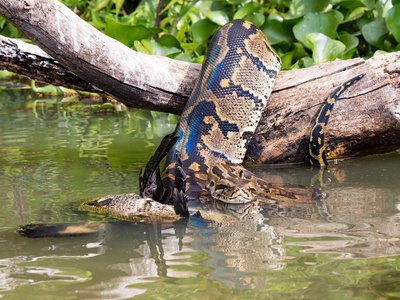
African Rock Python
One of Africa’s largest snakes, a non-venomous constrictor that kills its prey by coiling around it and suffocating it. It can swallow animals as large as small antelopes.
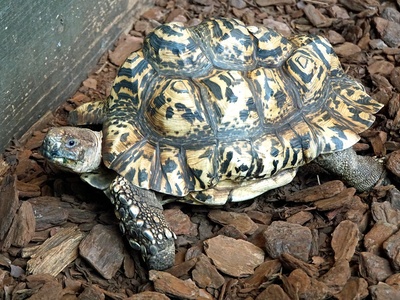
Leopard Tortoise
A large tortoise named for the beautiful leopard-like spots on its high-domed shell. They are herbivores that graze on a variety of plants and are known to live for a very long time.
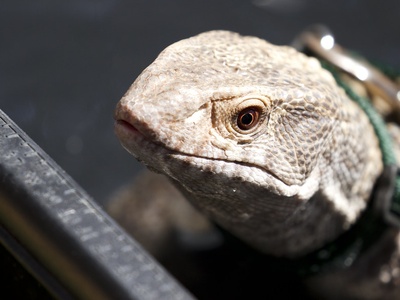
Savannah Monitor
A medium-sized lizard with powerful limbs for digging and a stout build. It is a popular species in the pet trade and spends much of its time on the ground foraging for insects and small vertebrates.
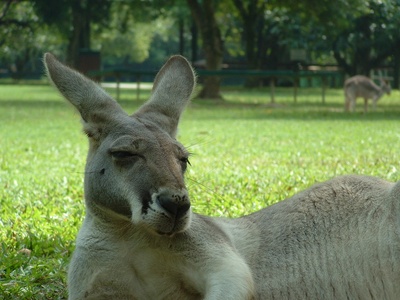
Red Kangaroo
The largest of all kangaroos and the largest living marsupial. Males have a reddish-brown coat. They are adapted to the dry Australian savanna, capable of conserving water and traveling long distances.
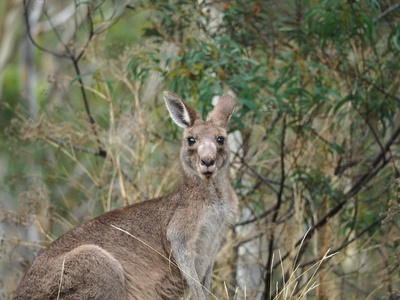
Eastern Grey Kangaroo
One of Australia’s most common kangaroos, often seen grazing in large groups or “mobs.” They are mostly active at dawn and dusk, resting in the shade during the heat of the day.
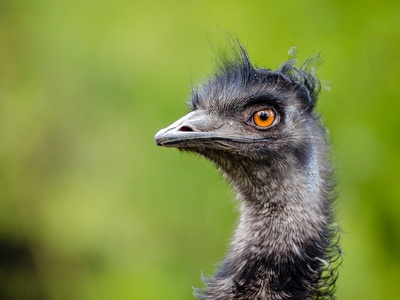
Emu
Australia’s largest bird, flightless but a powerful runner. Emus are nomadic and travel long distances to find food, feeding on plants, fruits, and insects. Males incubate the eggs and raise the chicks.
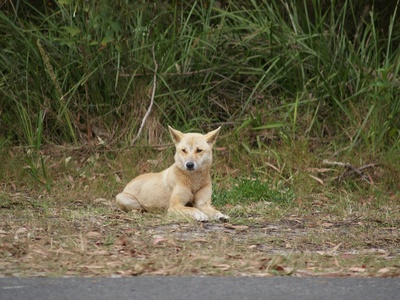
Dingo
Australia’s wild dog, believed to have descended from ancient domestic dogs. It is an apex predator that plays a crucial role in the ecosystem by controlling populations of kangaroos and smaller animals.
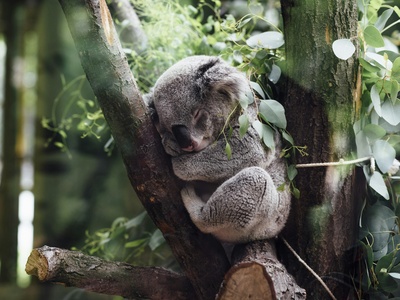
Koala
A tree-dwelling marsupial specialist that feeds almost exclusively on eucalyptus leaves. Koalas are largely sedentary, sleeping up to 20 hours a day to conserve energy due to their low-nutrient diet.

Agile Wallaby
A common and adaptable wallaby often found near rivers and waterholes. They are social animals that gather in groups to feed on grasses and other vegetation, primarily during the cooler parts of the day.
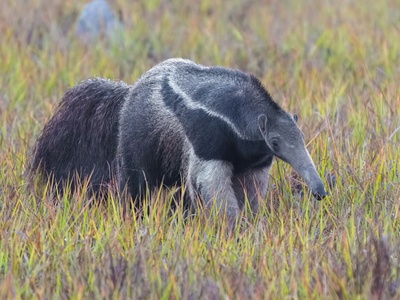
Giant Anteater
A large, unique mammal with a long snout, bushy tail, and a two-foot-long tongue for eating ants and termites. It is a solitary animal that is listed as Vulnerable due to habitat loss.

Maned Wolf
A long-legged canid that looks like a fox on stilts. It is not a true wolf and is a solitary, omnivorous hunter, eating small animals as well as a fruit called the “wolf’s apple.”
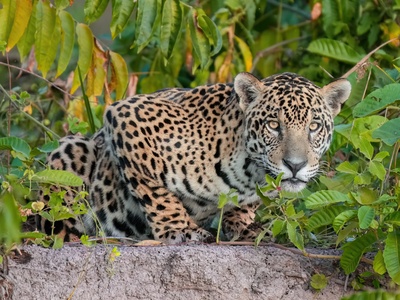
Jaguar
The largest cat in the Americas, known for its immense power and a bite strong enough to pierce skulls. In savanna habitats like the Pantanal, they are apex predators hunting caiman, capybaras, and deer.
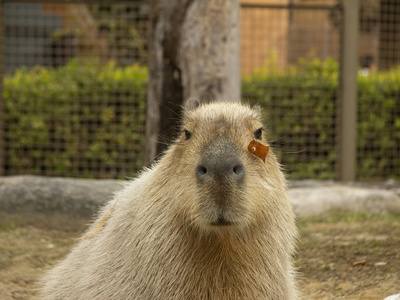
Capybara
The world’s largest rodent, a highly social, semi-aquatic animal that lives in large groups. They are excellent swimmers and graze on aquatic plants and grasses along riverbanks.
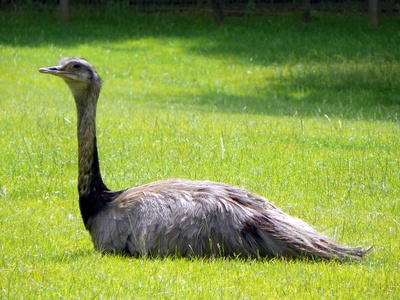
Greater Rhea
The largest bird in the Americas, a flightless relative of the ostrich and emu. Males are polygamous, incubating eggs from several females in a single nest and caring for the chicks alone.

Indian Rhinoceros
Also known as the greater one-horned rhino, it has a single horn and thick, armor-like skin folds. It is an excellent swimmer and primarily a grazer, with populations recovering from the brink of extinction.
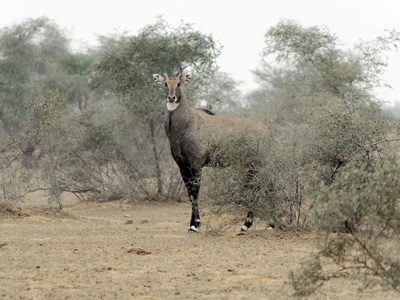
Nilgai
The largest antelope in Asia. Males are blue-grey and have short horns, while females are tawny and hornless. They are diurnal and live in small herds, feeding on grasses, leaves, and fruit.

Blackbuck
A fast-running antelope known for the striking, long, spiraled horns of the males and their dramatic black and white coats. They are one of the few antelopes where males and females have different coloration.

Marabou Stork
A massive, scavenger bird with a bald head, a huge bill, and a characteristic inflatable throat pouch. Often found near human settlements or following vultures to carcasses on the savanna.
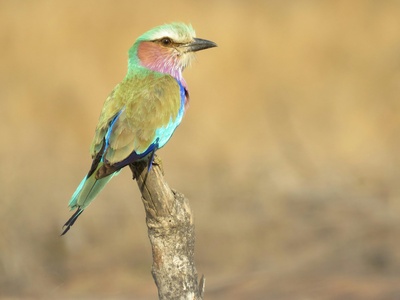
Lilac-breasted Roller
A stunningly colorful bird, famous for its acrobatic aerial displays during courtship. It is a national bird of both Kenya and Botswana and a favorite sighting for safari-goers.

Helmeted Guineafowl
A large, chicken-like bird with a polka-dotted body and a bony “helmet” on its head. They are highly social, forming large, noisy flocks that forage on the ground for seeds and insects.

Southern Ground Hornbill
A very large, terrestrial bird with black plumage and a bright red throat patch. They live in cooperative family groups and are formidable predators, hunting snakes, lizards, and insects on the ground.
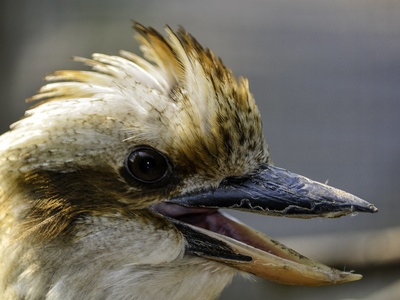
Laughing Kookaburra
A large species of kingfisher, famous for its unmistakable call that sounds like loud, echoing human laughter. They are carnivorous, preying on insects, worms, and small reptiles.
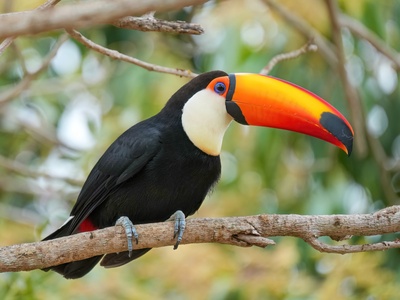
Toco Toucan
The largest and best-known toucan species, recognized by its enormous, colorful bill. The bill is lightweight and used for reaching fruit, thermoregulation, and as a visual signal to other toucans.
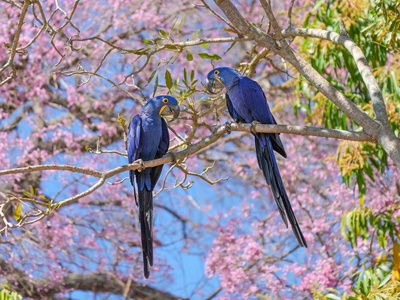
Hyacinth Macaw
The largest of all flying parrot species, with stunning solid blue plumage. It has a very strong beak for cracking hard nuts and seeds. It is a Vulnerable species due to the pet trade and habitat loss.

Giant Otter
The longest member of the weasel family, a highly social and vocal predator living in family groups. They are expert hunters of fish and are an endangered species.
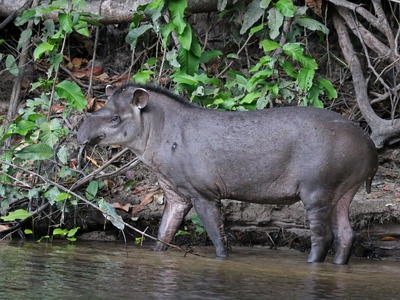
South American Tapir
A large, herbivorous mammal with a distinctive, prehensile snout. They are excellent swimmers and are primarily nocturnal or crepuscular, feeding on leaves, buds, and fruit.
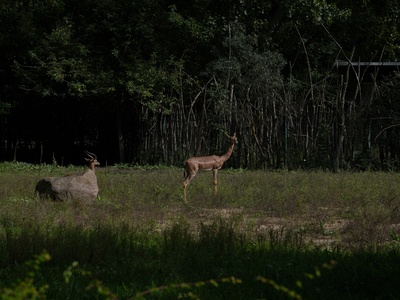
Gerenuk
A long-necked antelope known for its unique ability to stand on its hind legs to browse on tall bushes, using its forelegs for support. Its name means “giraffe-necked” in Somali.

Sable Antelope
A magnificent antelope with a glossy black coat and impressive, backward-curving horns that can be over a meter long in males. They are social animals living in herds.
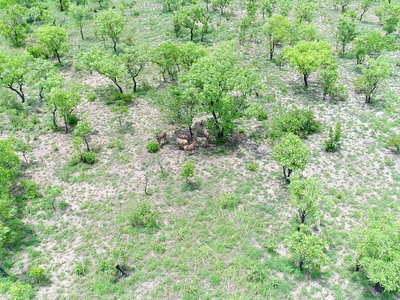
Roan Antelope
One of Africa’s largest antelopes, with a roan-colored coat and a distinctive black-and-white face mask. They are known for being courageous and will defend themselves fiercely against predators.

Topi
A highly social and fast antelope with a reddish-brown coat and purplish patches on its upper legs. They are often seen standing on termite mounds to get a better view of their surroundings.
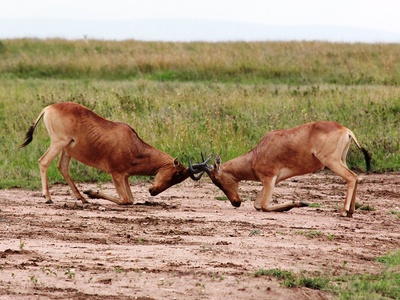
Hartebeest
A large antelope with a long, narrow face and oddly shaped, bracket-like horns. They are among the fastest and most enduring runners in the antelope world.
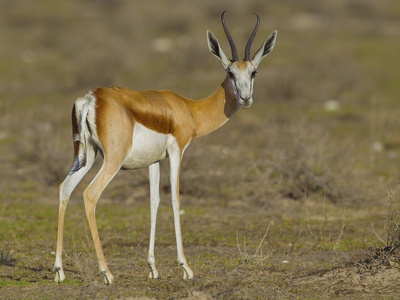
Springbok
South Africa’s national animal, famous for a behavior called “pronking,” where it leaps high into the air with a stiff-legged gait. This is done to show off or to confuse predators.

Gemsbok
A large, striking antelope with long, spear-like horns and distinctive black and white facial markings. They are incredibly well-adapted to hot, dry conditions and can survive without drinking water for long periods.

Grey Crowned Crane
An elegant bird known for its stiff, golden crest of feathers and a beautiful courtship dance involving bowing, jumping, and calls. It is the national bird of Uganda.
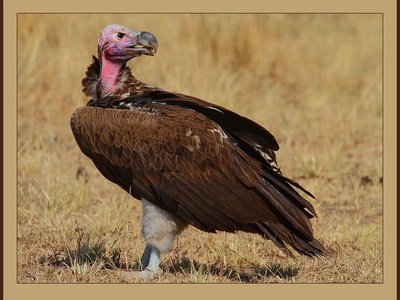
Lappet-faced Vulture
One of the largest and most powerful vultures, with a massive beak capable of tearing through tough hides that other scavengers cannot. They often dominate carcasses, bullying smaller vultures away.
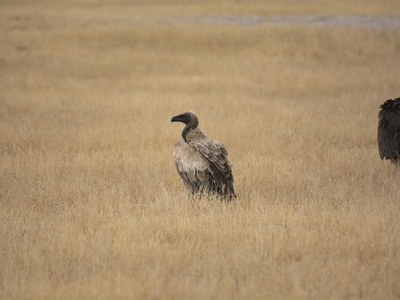
White-backed Vulture
The most common vulture species in Africa, often seen circling high in the sky in search of carcasses. They are critically endangered due to poisoning, habitat loss, and other human-related threats.
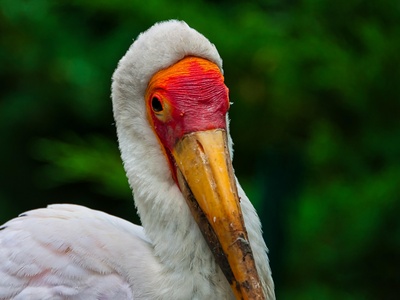
Yellow-billed Stork
A medium-sized wading bird with a bright yellow bill and pinkish legs during the breeding season. It catches fish by holding its open bill in the water and snapping it shut when it feels contact.

Grant’s Gazelle
Larger and paler than the Thomson’s gazelle, it is well adapted to dry regions and can obtain the water it needs from the plants it eats, allowing it to stay on the plains long after rains have passed.
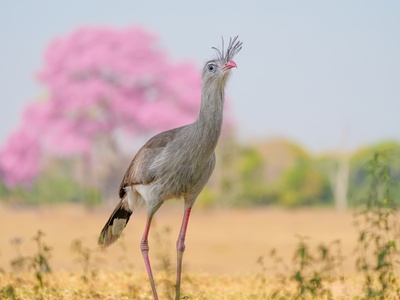
Red-legged Seriema
A large terrestrial bird, one of the closest living relatives of the extinct “terror birds.” It hunts for insects, snakes, and lizards on the ground and has a loud, distinctive yelping call.
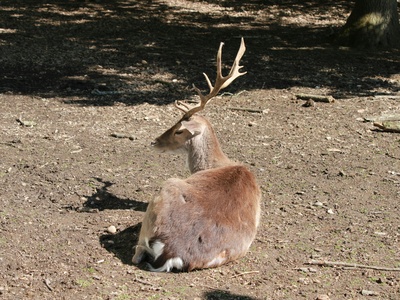
Pampas Deer
A medium-sized deer with a slender build. It was once widespread but is now a threatened species due to habitat conversion for agriculture. Males have small, three-tined antlers.

Hoary Fox
A small South American canid with a short muzzle and small teeth, adapted for a diet primarily consisting of termites and other insects, as well as small vertebrates and fruits.
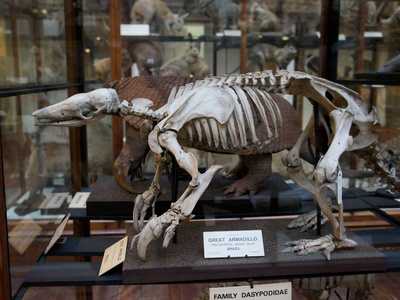
Giant Armadillo
The largest living species of armadillo, equipped with enormous front claws that it uses to dig for ants, termites, and other invertebrates. It is a rare, nocturnal, and vulnerable species.
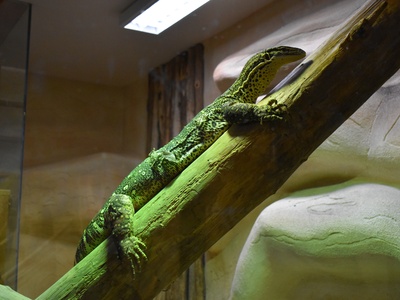
Gould’s Goanna
A large Australian monitor lizard, also known as the sand goanna. It is an active predator and scavenger, using its forked tongue to detect scents while foraging for insects, reptiles, and carrion.
